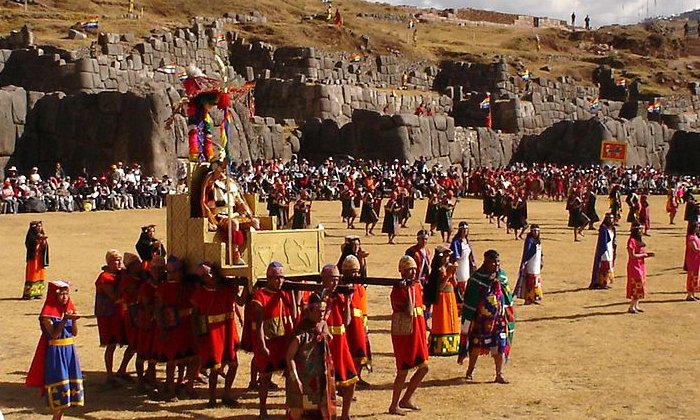What Was Inti Raymi And Why Was It Celebrated By Inca?
Conny Waters - AncientPages.com - Inti Raymi is Inca’s Sun Festival, traditionally celebrated at Cuzco on June 24, which marks the winter solstice, the shortest day of the year - the Inca New Year (in regions south of the equator, the Gregorian months, June and July are winter months.)
Inti Raymi (Festival of the Sun) at Sacsayhuaman,Cusco. Image credit: Cyntia Motta - CC BY-SA 3.0
It is an ancient Inca religious celebration of "The Inti or Sun." Formerly, the Inti Raymi lasted about 15 days, and the last one —carried out in the presence of the Inca Emperor—was in 1535, one year before ¨The Spanish Conquest¨ in 1536.
Today, it is a theatrical representation. Thousands of Cuzco and people from all over the world come together to this event, one of the most important cultural and traditional manifestations in this part of the world.
According to this ancient tradition, the Inca honored the beginning of the new solar year, a time when the Sun comes back to provide warmth for all life. It is the rebirth of the Sun, the Inca royalty, and the mythical origin of the Inca people.
Inti Raymi comes from the Quechua language: inti means “sun” and raymi means “festival.”
During the Inca Empire, only Inca males were allowed to participate in the festival. During the festival, offerings were made to the Sun, Viracocha, and the thunder god. The participants made many wooden statues dressed in fine clothes; at the end of the festival, the statues were burned.
The rituals associated with Inti Raymi are still performed and occur in front of huge crowds on this particular day each June at Cuzco, Peru.
The ancient fortress-ruins of Sacsayhuaman, in the hills overlooking the city, are filled that day with a very special atmosphere of Andean music, dance, a simulation of animal sacrifice (which originally served as an offering to the Sun God), parades, and ceremonies in the ancient Quechua tongue.
The lead figure is "The Inca" - the Emperor, supreme ruler of the Incan Empire. Carried on a platform and dressed in regal red and gold, the Emperor leads the ceremony with gestures and incantations to the Sun. During the festival, 500 actors representing Inca nobility are dressed in traditional clothes adorned with silver and gold. One actor portraying the Sapa Inca blesses the ceremony and speaks in the native language, Quechua, to honor the Sun.
According to Spanish chronicler, soldier, and poet Garcilaso de la Vega, the festival Inti Raymi was created by the ninth Sapa Inca Pachacuti in 1412 and lasted for nine days.
The last Inti Raymi with the Inca Emperor's presence was carried out in 1535, after which the Spanish and Catholic priests banned it for many years at least.
Little is known about the details of the Inti Raymi celebration, and most of what we see today is pieced together from archaeological findings, memories, and practices passed on from one generation to another to keep the ancient traditions alive.
As Quechua is not a written language, there are no written records of the rituals' origins. Among South American greatest celebrations, Inti Raymi is the second only to the festival in Rio de Janeiro.
Updated on June 1, 2024
Written by Conny Waters - AncientPages.com Staff Writer
Copyright © AncientPages.com All rights reserved. This material may not be published, broadcast, rewritten or redistributed in whole or part without the express written permission of AncientPages.com
Expand for referencesMore From Ancient Pages
-
 Were Medieval Philosophers Familiar With The Multiverse Theory?
Featured Stories | Oct 4, 2018
Were Medieval Philosophers Familiar With The Multiverse Theory?
Featured Stories | Oct 4, 2018 -
 Diver Says He Found Mysterious Underwater Ancient Tomb, Ruins And Artifacts Of An Unknown Advanced Civilization
Featured Stories | Oct 10, 2023
Diver Says He Found Mysterious Underwater Ancient Tomb, Ruins And Artifacts Of An Unknown Advanced Civilization
Featured Stories | Oct 10, 2023 -
 Long-Lost Viking Waterway Leading To Orkney, The Great Norse Empire – Discovered
Archaeology | Aug 5, 2020
Long-Lost Viking Waterway Leading To Orkney, The Great Norse Empire – Discovered
Archaeology | Aug 5, 2020 -
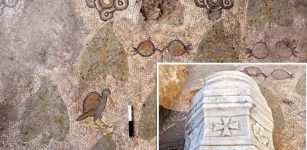 Extraordinary Ancient Mosaics, Crucifixes, And Long-Lost Church Discovered In The Holy Land
Archaeology | Dec 22, 2017
Extraordinary Ancient Mosaics, Crucifixes, And Long-Lost Church Discovered In The Holy Land
Archaeology | Dec 22, 2017 -
 Ancient Race Of Star Worshippers And Secret Message Stored In Unusual Monument
Civilizations | Jun 11, 2018
Ancient Race Of Star Worshippers And Secret Message Stored In Unusual Monument
Civilizations | Jun 11, 2018 -
 Monumental Totem Poles Of Native American People Tell Stories Of Ancestors
Featured Stories | May 22, 2017
Monumental Totem Poles Of Native American People Tell Stories Of Ancestors
Featured Stories | May 22, 2017 -
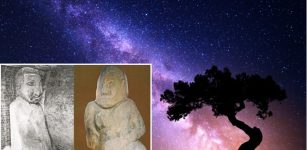 Controversial Stone Statues Of Niulang And Zhinyu And The Legend Of The Heavenly Queen And Milky Way
Artifacts | Sep 8, 2017
Controversial Stone Statues Of Niulang And Zhinyu And The Legend Of The Heavenly Queen And Milky Way
Artifacts | Sep 8, 2017 -
 Mysterious Viking Burial Site Of Three Women In Norway Reveals Its Secrets
Vikings | Dec 26, 2024
Mysterious Viking Burial Site Of Three Women In Norway Reveals Its Secrets
Vikings | Dec 26, 2024 -
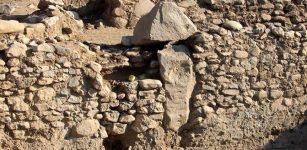 8,000-Year-Old T-Shaped, Four-Sided Structure With Pyramidion – Uncovered in Turkey
Archaeology | Nov 23, 2019
8,000-Year-Old T-Shaped, Four-Sided Structure With Pyramidion – Uncovered in Turkey
Archaeology | Nov 23, 2019 -
 Elysian Fields: Mysterious Resting Place For Heroic And Virtuous Souls In Greek Ancient Beliefs
Featured Stories | Feb 20, 2020
Elysian Fields: Mysterious Resting Place For Heroic And Virtuous Souls In Greek Ancient Beliefs
Featured Stories | Feb 20, 2020 -
 Modern Humans Carrying The Neanderthal Variant Have Less Protection Against Oxidative Stress
Archaeology | Jan 6, 2022
Modern Humans Carrying The Neanderthal Variant Have Less Protection Against Oxidative Stress
Archaeology | Jan 6, 2022 -
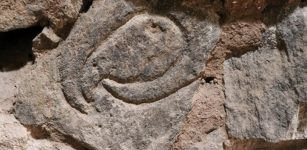 3,500-Year-Old Neo-Hittite Hieroglyphs Found In Cappadocia
Archaeology | May 27, 2019
3,500-Year-Old Neo-Hittite Hieroglyphs Found In Cappadocia
Archaeology | May 27, 2019 -
 Great Pyramid of Cholula Is The Largest In The World Today
Ancient History Facts | Feb 9, 2016
Great Pyramid of Cholula Is The Largest In The World Today
Ancient History Facts | Feb 9, 2016 -
 Young Boy Finds Unique Micro-Mosaic Cross Medallion In Jerusalem
Archaeology | Jan 3, 2025
Young Boy Finds Unique Micro-Mosaic Cross Medallion In Jerusalem
Archaeology | Jan 3, 2025 -
 Early Farmers On The Baltic Coast Incorporated Fish Into Their Diets 6,000 Years Ago
Archaeology | Oct 17, 2023
Early Farmers On The Baltic Coast Incorporated Fish Into Their Diets 6,000 Years Ago
Archaeology | Oct 17, 2023 -
 On This Day In History: Battle Of Lagos Took Place Between Royal Navy Of Britain and France – On August 19, 1759
News | Aug 19, 2016
On This Day In History: Battle Of Lagos Took Place Between Royal Navy Of Britain and France – On August 19, 1759
News | Aug 19, 2016 -
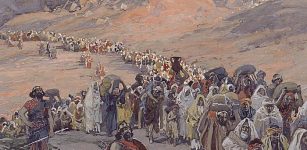 Why Were The Jews Exiled To Babylon?
Ancient History Facts | Jan 14, 2020
Why Were The Jews Exiled To Babylon?
Ancient History Facts | Jan 14, 2020 -
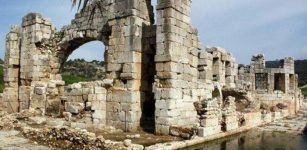 City Of Patara: Long History Of Wars And Visits Of Prominent Figures Of Ancient World
Archaeology | Jul 9, 2020
City Of Patara: Long History Of Wars And Visits Of Prominent Figures Of Ancient World
Archaeology | Jul 9, 2020 -
 The Real Paleo Diet: New Archaeological Evidence Changes What We Thought About How Ancient Humans Prepared Food
Featured Stories | Nov 28, 2022
The Real Paleo Diet: New Archaeological Evidence Changes What We Thought About How Ancient Humans Prepared Food
Featured Stories | Nov 28, 2022 -
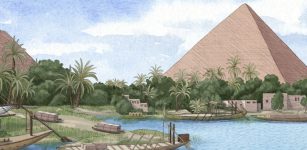 Evidence The Khufu Channel Aided The Construction Of The Giza Pyramids Found – Scientists Say
Archaeology | Aug 31, 2022
Evidence The Khufu Channel Aided The Construction Of The Giza Pyramids Found – Scientists Say
Archaeology | Aug 31, 2022

